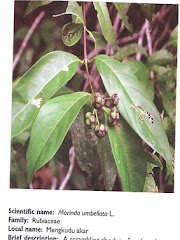Project goal
COMPACT seeks to demonstrate how community-based initiatives can significantly increase the effectiveness of biodiversity conservation in the co-management of globally significant protected areas by working to improve the livelihoods of local populations.
Background
In 1999, the Global Environment Facility Small Grants Programme (SGP) joined efforts with the United Nations Foundation (UNF) to launch a partnership initiative entitled ‘Community Management of Protected Areas for Conservation’ (COMPACT). Since its inception, the main objective of COMPACT has been to demonstrate how community-based initiatives working with local and indigenous groups can significantly increase the effectiveness of biodiversity conservation in globally significant protected areas including natural World Heritage Sites, Biosphere Reserves, Ramsar sites, and globally important marine coral reefs.
The programme was funded as a pilot initiative between 2000-2004. During this period, numerous partners including the UNESCO World Heritage Centre, UNF and UNDP played an important role in preparing a coordinated strategy for a pilot demonstration initiative which would trial the community-based approach in a range of different ecological, socio-economic and institutional settings. The six participating WH sites finally selected included: two in Africa (Mt. Kenya, Kenya, and Mt. Kilimanjaro, Tanzania); two in Latin America (Sian Ka’an, Mexico, and the Belize Barrier Reef System); one in the Caribbean (Morne Trois Pitons, Dominica); and one in Asia (Puerto Princesa Subterranean River, Philippines). In total, the SGP-UNF partnership has committed some $4 million of GEF resources to complement $3.25 million in funding from the UNF at the six WH sites.
COMPACT is managed and implemented by the SGP. Administered by the United Nations Development Programme (UNDP) on behalf of the United Nations Environment Programme (UNEP), UNDP and the World Bank, SGP supports community-based initiatives that help protect the global environment within the five GEF focal areas which cover: (i) biodiversity, (ii) climate change, (iii) land degradation, (iv) international waters, and (v) persistent organic pollutants. The SGP operates in 73 developing countries, and has disbursed over $100 million in grants averaging just under $20,000 to more than 4,000 projects between 1992-2003. The maximum grant size for small grants to non-governmental organizations (NGOs) and community-based organisations (CBOs) is currently capped at $50,000. At the national level, SGP is led by a National Coordinator with strategic guidance from a voluntary National Steering Committee.
In each of the WH sites selected, COMPACT has sought to enhance the capacities of CBOs and NGOs working in and around the protected area. Building on the decentralized structure and established methodologies of the SGP, COMPACT addresses sustainable development by responding directly to funding proposals submitted by local NGOs, community-based organisations, and indigenous groups. Grant allocation, oversight and overall programmatic guidance are provided nationally by the SGP National Steering Committee composed of government representatives, academia, conservation and development NGOs, and the scientific sector.
In terms of operational management, the SGP National Coordinator (NC) has overall responsibility at the national level with administrative support from the UNDP Country Office. At the WH site level, a full-time Local Coordinator (LC) was funded to provide support to grantees, carry out monitoring and evaluation of projects, and guarantee a continued field-level presence for the programme. Most importantly, ‘Local Consultative Bodies’ (LCBs) were also created at each WH site to pre-screen grant proposals and encourage coordination between concerned government authorities, donors and key stakeholders.
COMPACT also follows a standardized methodology. Each participating WH site conducted a thorough Baseline Assessment (BA) in order to prepare a COMPACT site strategy and ‘conceptual model’ to guide grant-giving in the landscape surrounding the WH site designed to safeguard biodiversity whilst addressing the livelihoods of local populations. Examples of over 150 projects funded in the pilot phase include buffer zone and outreach projects, sustainable tourism, small-scale irrigation, preservation of traditional ecological knowledge, micro-hydro and renewable energy projects, increased productivity of agro-ecosystems, as well as a suite of income-generating activities such as apiculture, organic farming, and community-managed fisheries.
In addition, in collaboration with UNEP, two of the COMPACT programmes working in Mt. Kenya and Mt. Kilimanjaro refined an aerial survey technique to systematically monitor land use changes within the WH site. Inter alia, benefits arising from the technology have included: (i) accurate assessment of major threats to WH sites; (ii) clear communication of the extent of these threats through detailed photographs; (iii) targeted management responses to the most critical threats; (iv) increased awareness among policymakers and the media of the significance and the seriousness of threats to WH sites; (v) engagement of multiple donors to work collaboratively across the protected area; and (vi) a long-term “baseline” against which future management efforts can be monitored and evaluated through follow-up aerial surveys.
Lessons from the COMPACT Pilot Phase (2000-2004)
A key lesson emerging from the pilot phase of COMPACT has been that park managers and government officials often display little experience in working together with local communities living in and around WH sites. In addition, many of the local coordinators reported that the level of appreciation of the World Heritage designation at the sites concerned was surprisingly low, with relatively few communities even being aware of the international status of the area. In response, COMPACT programmes have consistently publicized the outstanding universal value of the WH sites. Key outreach activities have focused on schools, teacher training colleges, artists, film makers and news media – all using a wide range of written and visual materials in local languages.
Another emerging lesson has been that individual community-based micro-projects around the protected area have required less time for planning and implementation than larger interventions, with results becoming visible more quickly. As reported at a number of the WH sites, stakeholders compared COMPACT favorably with other projects where planning took too long, and implementation was stifled by bureaucratic procedures. As a result, COMPACT often contributed to increasing cooperation between park management, local resource users, donors, NGOs, and the private sector.
At the portfolio level, clusters of livelihood projects with multiple synergies may present a cost-effective strategy to better address critical threats and pressures to protected areas. Furthermore, learning exchanges between a wider range of small projects (as developed by COMPACT around Sian Ka’an, Mexico) can be further promoted between grantees – either through the LCB or as a “grantee forum” – often leading to better communication with the relevant WH authorities. In total, COMPACT grantees have established over 100 partnerships between protected areas authorities, government bodies, NGO networks, utility companies, hoteliers, tourism associations, foundations, national universities, research centers and many others. The overall effect has been to help build a broader grassroots constituency for the conservation of WH sites, ensuring that the impact of COMPACT is greater than the combined achievements of individual projects. Many grantees have also become advocates for protected area conservation as a result of the exposure received from understanding the project portfolio for the entire WH landscape.
Numerous donors have also found the COMPACT structure and modalities appealing and have pledged further financial resources to WH sites where the programme operates. In particular, the ‘Mt. Kenya Donor/Partners Forum’ initiated by COMPACT has secured significant donor coordination, totaling some US$35 million, which complement COMPACT initiatives within the wider WH landscape, including critical watershed management.
As concluded by the 2003 evaluation of the programme, COMPACT represents a “low-cost, innovative and replicable institution” which promises to become a force for the effective management of WH sites and their surrounding landscapes. In addition, members of an expert panel convened during a UNF knowledge-gathering workshop held at the World Parks Congress in September 2003 invited the WH Committee to consider the formation of a COMPACT-modeled LCB as an integral part of every natural and mixed WH nomination.
In February 2004, as a consequence of COMPACT’s promising track record of encouraging landscape-level conservation, and of bringing about positive synergies between multilateral conventions, an official Memorandum of Cooperation was signed between the Secretariat of the Convention on Biological Diversity (CBD), the World Heritage Centre, and the SGP at the 7th Conference of the Parties (COP7) of the CBD. In recognition of COMPACT’s strong potential for replication elsewhere, the objectives of the Memorandum are as follows:
(a) To contribute to the achievement of the CBD target to reduce the current rate of biodiversity loss by 2010;
(b) To encourage reciprocal learning by linking World Heritage sites and networks that each party supports in order to build national and community-based capacity to secure the long term sustainability of protected areas;
(c) To ensure that good practice generated at the World Heritage site level is captured to inform policy debate through documentation or collaborative work, in particular focusing on project benefits for local and indigenous communities, and replication nationally and internationally;
(d) To engage in resource mobilization with additional donors for projects linked to community livelihoods and conservation and sustainable use of biodiversity around existing and proposed World Heritage sites;
(e) To increase the visibility of joint SGP-World Heritage related activities through dissemination of lessons learned amongst protected area professionals and other stakeholders at the national, regional and international levels.
Planning for COMPACT Phase II (2005-2010)
Between June 4-12th, 2004 a consultation workshop was held in Merida, Mexico, to examine the achievements of the pilot phase of COMPACT, and to consider modalities for a second phase of the programme. In particular, the workshop: (a) reviewed the experience of the pilot phase of COMPACT; (b) consulted with existing and potential partners for a consolidated and expanded Phase II of the programme; and (c) examined COMPACT as a direct contribution to the Programme of Work on protected areas (PoW) adopted at CBD COP7.
The workshop recommended that in Phase II, the SGP-UNF partnership should aim to build on the success of the pilot phase and to work more closely with the Secretariats of the Convention on Biological Diversity and the 1972 UNESCO Convention concerning the World Cultural and Natural Heritage. Based upon the decisions of the COP7 held in February 2004, the CBD Secretariat further reiterated that the community-level approach demonstrated by COMPACT could be a taken up and adopted as an example of good practice by the World Heritage Committee. In addition, the CBD Secretariat recommended that the COMPACT framework be considered for replication in a maximum number of existing and potential World Heritage sites, Biosphere Reserves, and wetlands of international importance.
The workshop also examined criteria for the inclusion of additional globally significant protected areas within COMPACT. The range of available modalities examined included: (i) extension of the scope of grant-giving activities with a view to increasing the size or extent of WH sites in existing locations; (ii) expansion to other WH sites in countries where a COMPACT programme is already in operation; (iii) addition of further WH sites to the programme in established SGP participating countries; (iv) targetted assistance to ‘Tentative List’ sites endorsed by governments for WH nomination in SGP participating countries; as well as (v) adoption of a strategic “COMPACT approach” for grant-giving in new SGP country programmes in selected least developed countries (LDCs) and small island developing states (SIDS).
In particular, the planning meeting invited suggestions and inputs from a number of prospective partners and SGP National Coordinators, including: (i) the SGP National Coordinator from Senegal with regard to potential COMPACT operations in and around the Djoudj National Bird Sanctuary inscribed on the WH List, currently under consideration as part of a trans-frontier Biosphere Reserve; and (ii) an expert representative from the UNF-funded project in Madagascar with regard to potential COMPACT activities around clusters of protected areas proposed for World Heritage nomination.
For more information on specific COMPACT projects, please click the country links below or contact the country team leader.
COMPACT TEAM
CPMT Mr. Terence Hay-Edie Tel: (212) 906-5079
Email: terence.hay-edie@undp.org
BELIZE Mr. Omar J. Gale
UNDP 2nd Fl. Builder’s Hardware Building
Constitution Drive
P.O. Box 53
Belmopan, Belize Tel: (501) 822 2462/822 2688
Fax: (501) 822 3364
Email: gefsgp@btl.net
DOMINICA Mr. Alber Bellot
C/o Dominican Save the Children Fund
Bath Estate
P.O. Box 169
Roseau, Dominica Tel: (767) 4480708
Fax: (767) 448-6078
Email: albertb@unops.org
KENYA Ms. Nancy Chege
c/o CETRAD
P. O. Box 144-10400
Nanyuki Tel: 254-62-31328/62-31297
Fax: 254-62-31323
Email: nancy.chege@undp.org
MEXICO Mr. Julio Moure Cortes
Avenida Benito Juárez, 641
Colonia Juan Bautista Vega
77250 Felipe Carrillo Puerto
Quintana Roo MEXICO Tel/Fax: (52) 983 8340763
Email: jmoure@prodigy.net.mx
PHILIPPINES c/o Ms. Angelita B. Cunanan
217-A National Highway
San Pedro
Puerto Princesa City
Philippines T/Fax: (632) (48) 434-5684
Email: compact@mozcom.com
TANZANIA Ms. Victoria Nderumaki
c/o HEM Trust Fund
P.O. Box 131
Moshi, URT Tel: (027) 2756260
Fax: (027) 2753787
Email: vickynde@yahoo.com
أَلَمْ تَرَ أَنَّ اللَّهَ يُسَبِّحُ لَهُ مَنْ فِي السَّمَاوَاتِ وَالأرْضِ وَالطَّيْرُ صَافَّاتٍ كُلٌّ قَدْ عَلِمَ صَلاتَهُ وَتَسْبِيحَهُ وَاللَّهُ عَلِيمٌ بِمَا يَفْعَلُونَ Tidakkah kamu tahu bahwasanya Allah: kepada-Nya bertasbih apa yang di langit dan di bumi dan (juga) burung dengan mengembangkan sayapnya. Masing-masing telah mengetahui (cara) solat dan tasbihnya, dan Allah Amat Mengetahui apa yang mereka kerjakan. an-Nur:41
Tazkirah
Sami Yusuf_try not to cry
mu'allim Muhammad Rasulullah Sallallahu alaihi waSalam
ummi_mak_mother_ibu_Sami Yusuf
zikir Tok Guru Nik Abdul Aziz Nik Mat Mu'allimul Mursyidi
syeikh masyari afasi
ruang rindu
song
Arisu Rozah
Usia 40

Mudah mudahan diluaskan rezeki anugerah Allah
usia 40 tahun

UPM
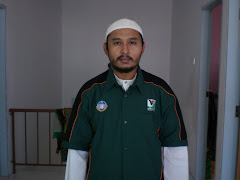
Kuatan Pahe Darul Makmur
pemakaian serban semsa menunaikan solat_InsyaAllah ada sawaaban anugerah Allah
Rempuh halangan
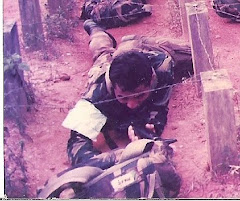
Abah_menyokong kuat oengajian Ijazah UPM

usia 39 tahun

usia 23 tahun_UPM
An_Namiru

Ijazah Pengurusan Hutan UPM

General Lumber_Nik Mahmud Nik Hasan

Chengal

Tauliah

Semasa tugas dgn general lumber

PALAPES UPM

UPM

Rumah yang lawa

Muhammad_Abdullah CD
semasa bermukim di Kuatan Pahe Darul Makmur
Ijazah

air terjun

Borneo land

GREEN PEACE
GREEN PEACE
Kelang

Ahlul Bayti_ Sayid Alawi Al Maliki

Asadu_ Tenang serta Berani

atTiflatul Falasthiniin

Sayid Muhammad Ahlul Bayt keturunan Rasulullah

AnNamiru_SAFARI_Kembara

AnNamiru_resting

Hamas

sabaha anNamiru fil nahri

Namir sedang membersih

Tok Guru Mualimul_Mursyid

An_Namiru
.jpg)
Namir_istirehat
.jpg)
SaaRa AnNamiru fil_Midan
.jpg)
Renungan Sang Harimau_Sabaha AnNamiru
.jpg)
Syaraba AnNamiru Ma_A
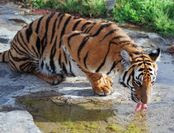.jpg)
AnNamiru_Riadhah
.jpg)
AnNamiru_Riadhah
.jpg)
AnNimru ma_A waladuha
Namir fil_Ghabi (sebut Robi...
Namir

AdDubbu_Beruang di hutan

Amu Syahidan Wa La Tuba lil_A'duwwi

AsSyahid
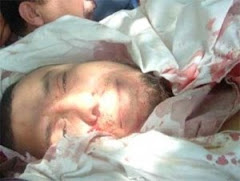
Namir

Tangkas
najwa dan irah

sungai

najwa

najwa

Kaabatul musyarrafah

unta

Jabal Rahmah

masjid nabawi

masjid quba

dr.eg

najwa dan hadhirah

along[macho]
![along[macho]](https://blogger.googleusercontent.com/img/b/R29vZ2xl/AVvXsEjuMi7D33CmR0_KXrCW2XigfLcUuQurcvtqOS139ncCwEzCyB-jUopk7QK7anADIenJEm2S0N6gAY1ubnACYXewgiAsI3rBjnLTawM39alLL-rEopOoVqn0w5WpLhPJH3hrXNtchEhgtyaI/s240/P7150023.JPG)
harissa dan hadhirah

adik beradik
Tongkat Ali

Tongkat Ali
herba kacip Fatimah
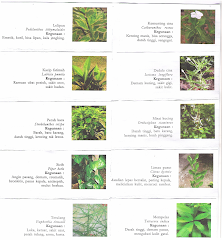
herba Kacip Fatimah
hempedu beruang
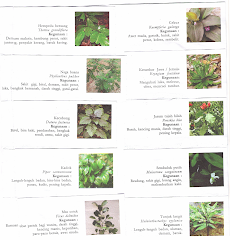
hempedu beruang
hempedu bumi

hempedu bumi
herba misai kucing

herba misai kucing
herba tongkat Ali
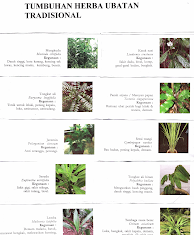.png)
Tongkat Ali
Ulama'

Ulama'
kapal terbang milik kerajaan negara ini yang dipakai pemimpin negara

kapal terbang
Adakah Insan ini Syahid

Syahid
Tok Ayah Haji Ismail

Saifuddin bersama Zakaria

Dinner....
Sukacita Kedatangan Tetamu
Pengikut
Kalimah Yang Baik

Ubi Jaga
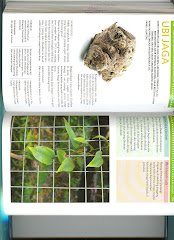
Ubi Jaga
Arkib Blog
Burung Lang Rajawali

Chinese Sparrowhawk
Kelicap Mayang Kelapa
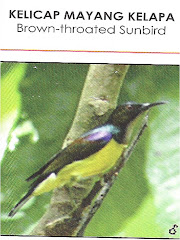
Brown-Throated Sunbird
Kopiah

Pokok Damar Minyak

Kacip Fatimah
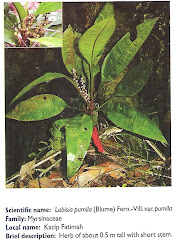
Mengkudu Akar
